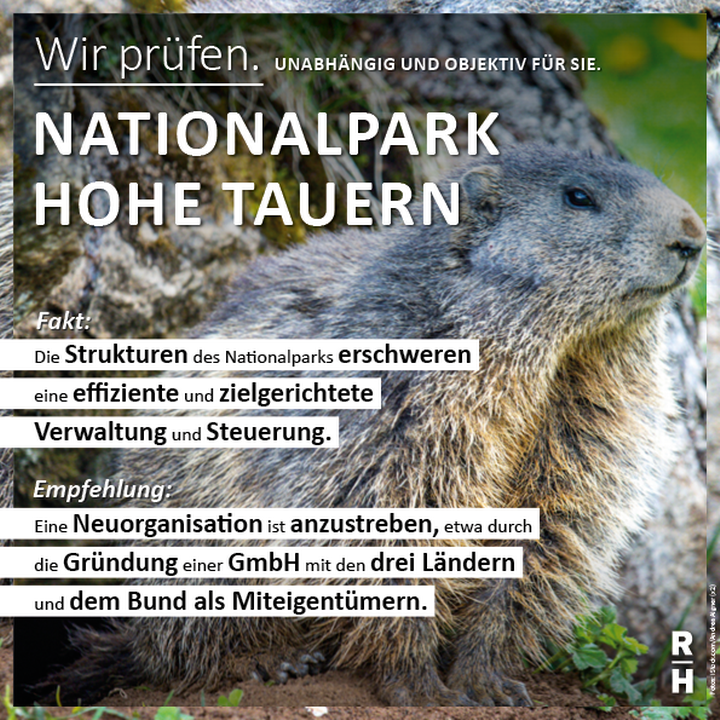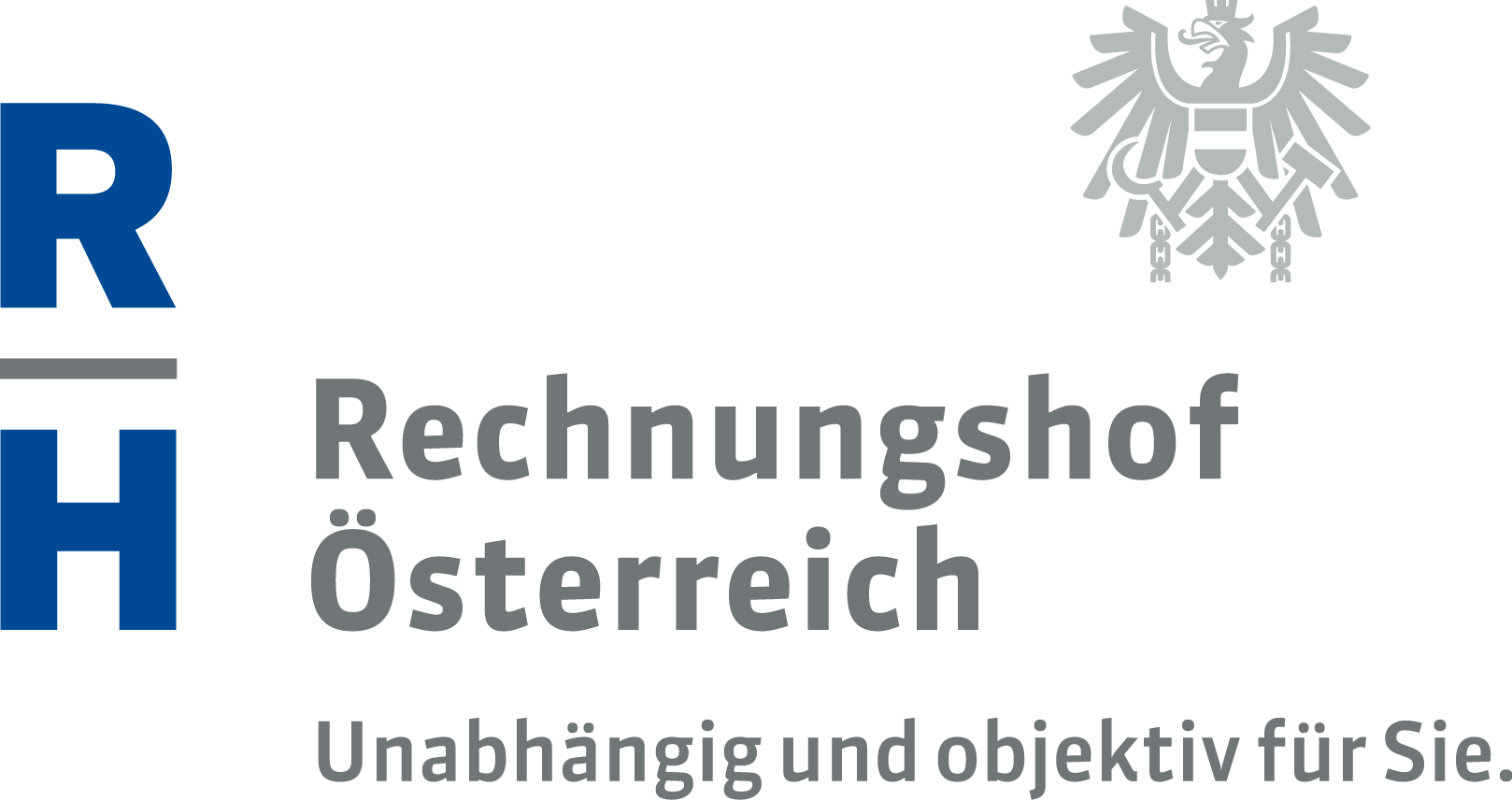Hohe Tauern National Park: ACA recommends joint limited liability company of provinces and Federal Government

The Hohe Tauern National Park extends across the provinces of Carinthia, Salzburg and Tyrol and is Austria’s oldest national park. The national park’s current organizational structure developed over the course of time. However, in its report on “The Hohe Tauern National Park” (in German) published today, the ACA ascertained that it has structural weaknesses from today’s perspective. The auditors recommend reorganizing the national park with a uniform management as well as with a uniform structure encompassing both the Federal Government and the provinces. This could be achieved, for example, by establishing a limited liability company (Gesellschaft mit beschränkter Haftung; GmbH) jointly owned by the three provinces and the Federal Government. In addition, the ACA points to a core challenge for the national park: the climate crisis. This should lead to a reevaluation of planned construction projects within the national park, among other things. The audited period spanned the years from 2017 through 2021.
Administration should be simplified
With its 1,856 square kilometres, the Hohe Tauern National Park is the largest national park in the Alpine region. A large part of the national park’s territory is privately owned. The national park is caught between different protection and exploitation interests, with nature, species and landscape conservation as well as the conservation of the typical cultural landscape created by the mountain farming population on the one hand, and the park’s use as a tourist site on the other.
The administration and management of the national park is complex: the provinces of Carinthia, Salzburg and Tyrol each have their own designated departments, the so-called national park administrations. In addition, dedicated national park funds are in charge of execution at the provincial level. Each fund has its own decision-making body, the so-called National Park Board of Trustees, and a body or committee that partly has an advisory function and partly also takes decisions. Furthermore, coordination between the Federal Government and the provinces takes place via structures spanning both levels of government. On top of this, there are various other bodies, committees, administrative offices and working groups.
The ACA critically notes that these structures impede an efficient and targeted national park administration and management that is also aligned across provinces. It therefore recommends reorganizing the national park. Modelled on other national parks, this could be achieved by establishing a limited liability company jointly owned by the three provinces as well as the Federal Government.
The challenge of the climate crisis: construction projects should be re-evaluated
The Alpine region, and thus also the national park, is particularly affected by global warming, with temperatures rising faster here than in other regions. The consequences are terrain that is becoming increasingly unstable due to melting glaciers and thawing permafrost soil, increasingly frequent extreme weather events and altered habitats and climatic conditions for protected animal and plant species. The ACA sees the handling of these developments as one of the core challenges for the national park in the upcoming years and decades.
A concrete example for extreme weather events is floods, which particularly affected the Obere Pinzgau region in the part of the national park that belongs to Salzburg. The flood of the summer of 2021 submerged large portions of the Salzach’s valley floor and caused considerable infrastructure damage, for example to the Pinzgauer railway. Now, there are plans to build retention areas in the side valleys south of the Salzach. However, constructing the retention basins at the intended locations could considerably interfere with the national park’s objects of protection. 22 per cent of the retention capacity of the planned retention basins would be located in particularly sensitive zones of the national park, with around ten per cent in the strictly protected wilderness area called “Sulzbachtäler”. Assuming an average water depth of 20 metres, surfaces the size of 4 to 26 football pitches would be submerged in water in the areas in question. Both their construction and their ongoing maintenance would require access roads with suitable dimensions for heavy machinery in a particularly protected area. Therefore, the ACA recommends searching for alternatives to the retention basins that have a less severe impact on the national park’s objects of protection.
The ACA also criticizes a construction project alongside the Gamsgrubenweg path close to the Großglockner Hochalpenstraße road in the part of the national park that belongs to Carinthia. Due to rockfall, the path has already been secured with several rockfall galleries and tunnels. The construction of a new mountain shelter is planned at this location. Newly constructing a shelter is contradictory to protecting the particularly sensitive special protection areas, some of which it is even forbidden to access. In addition, there is the question of how sustainable the enlargement of the path is, considering that the increasing risk of rockfalls and landslides due to the climate crisis affects the Gamsgrubenweg path as well.
The national park’s financial position is solid, but financial planning is lacking
The core funding of the national park’s managements is made up of federal funding and grants from the provinces – the latter especially make monetary allocations to the funds and provide staff to the national park administrations. The Federal Government provides the national park with EUR 2.56 million per year. It has not increased this amount since 2008. Furthermore, the national park funds receive project-related EU funding and generate sales revenue as well as sponsorship income. As at 31 December 2021, each of the three national park funds held liquid funds amounting to over EUR 1 million on savings accounts or current bank accounts. However, there was no comprehensive multi-year financial and liquidity planning. The ACA recommends introducing such a plan and calculating funding requirements at least on a quarterly basis.
- pdf Datei:
- 9,099.2 KB
- Umfang:
- 172 Seiten


